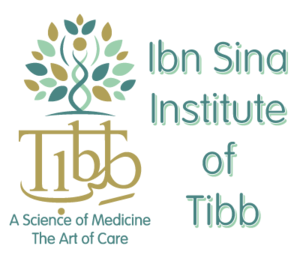[rev_slider slider5]
Also included below is a link to a short video by Joey Rasdien highlighting these traits.
[/vc_cta]
We would have lots of fun, but accomplish little.
He could have made us all Melancholics.
We would have been organized and chartered, but not very cheerful.
He could have made us all Bilious.
We would have been set to lead, but impatient that no one would follow!
He could have made us all Phlegmatics.
We would have had a perfect world, but not much enthusiasm for life.
We need each temperament for the total function of the body. Each part should do its work to unify the action and produce harmonious results.[/vc_cta]
Now that you have some insights on the personality traits of the four temperaments, listed below is a table that will assist you in completing the exercise. Note that your dominant/sub-dominant temperament, will be next to each other and not opposite. For example, a person with a dominant sanguinous temperament, will have a sub-dominant of phlegmatic or bilious, and not melancholic. The reason being that the sanguinous temperament has qualities of hot and moist and melancholic has opposite qualities of cold and dry, and as in nature opposites (hot – cold; moist – dry) cannot exist. Similarly a person with a dominant phlegmatic will have a sub-dominance of either sanguinous or melancholic and not bilious.
Below are some guidelines to assist you. Remember, nobody fits perfectly into only one temperament; you may have characteristics of other temperaments as well.
FRAME & GAIT
(walk) – Med to large with more muscle; macho gait –Sanguinous;
med to large with more fat, slow gait –Phlegmatic;
lean, firm and fast gait –Bilious;
thin and bony (tall/short), preoccupied gait –Melancholic.
COMPLEXION & SKIN TEXTURE:
Reddish (light skin), Shiny (dark skin), Moderate in softness & moistness, Warm –Sanguinous;
Whitish/pale, Cool, Moist, Soft – Phlegmatic;
Warm, Dry – Bilious;
Dry, Rough, Cold – Melancholic
CLIMATIC/PREFERENCES
– Prefers cold, dry conditions; winter & autumn –Sanguinous;
prefers hot, dry conditions; summer & spring –Phlegmatic;
prefers cold, moist conditions; winter & rainy weather –Bilious;
prefers hot, moist conditions; summer & rainy weather –Melancholic.
FOOD & DRINK:
Healthy appetite – moderate to excessive thirst, prefers cold drinks – Sanguinous.
Slow, steady appetite – low thirst, can skip meals, prefers hot drinks – Phlegmatic.
Healthy appetite – excessive thirst, cannot skip meals, prefers cold drinks – Bilious.
Irregular & variable appetite & thirst, prefers hot drinks – Melancholic.
HEALTH PROBLEMS:
Hypertension, Diabetes – Sanguinous.
Phlegm related disorders – Phlegmatic.
Stress & anxiety, hay fever – Bilious.
Insomnia & gas related disorders, Bone and Joint complaints – Melancholic.
SLEEP PATTERN:
Moderate to deep, 6-8 hours –Sanguinous.
Heavy, at least 8 hours –Phlegmatic.
Moderate but sound, 5-6 hours –Bilious.
Interrupted, tendency towards insomnia, 5-7 hours –Melancholic.
SPEECH
Clear and moderate speaker – not loud nor soft, fast nor slow; likes to talk – Sanguinous.
Slow and soft – Phlegmatic.
Firm tone of voice; outspoken – Bilious.
Fast speaker – Melancholic.
PERSONALITY TRAITS:
Persuasive, sociable, outgoing, talkative – Sanguinous.
Calm, accommodating, patient, good listener – Phlegmatic.
Resourceful, outspoken, dominant, driver, may be short tempered – Bilious.
Thoughtful, logical, analytical, tends to be perfectionist – Melancholic.
EMOTIONAL TRAITS:
Playful, cheerful, excitable, disorganized, tends to exaggerate – Sanguinous.
Shy, self-contained, indecisive – Phlegmatic.
Aggressive, angry, irritable, impatient – Bilious.
Fearful, insecure, suspicious, anxious –Melancholic.[/vc_cta]

Now that you have identified your dominant/sub-dominant temperament let us look at the qualities associated with each temperament combination.
If an individual has a dominant temperament of Sanguinous (Hot & Moist) and a less dominant Phlegmatic (Cold & Moist), then the resultant qualities associated with that temperament will be somewhere between Hot & Moist and Cold & Moist. This depends on the extent of the dominant temperament.
 In the above example, moistness is the common quality between Hot & Moist and Cold & Moist. This person’s ideal qualitative state will consist of a dominant quality of moistness, followed in turn by heat, coldness and finally the least amount of dryness. Any change to this ideal qualitative combination will have a negative influence on the individual’s health. As moistness is the dominant quality associated with this individual, changes in the level of moistness (and more particularly, excess of moistness) will negatively affect this individual the most and to the greatest extent. On the other hand, changes in the quality of dryness (which is the least is concentration), will have the least negative effect in the individual. This is why a person with a dominant sanguinous and sub-dominant phlegmatic temperament will be least comfortable in humid weather.
In the above example, moistness is the common quality between Hot & Moist and Cold & Moist. This person’s ideal qualitative state will consist of a dominant quality of moistness, followed in turn by heat, coldness and finally the least amount of dryness. Any change to this ideal qualitative combination will have a negative influence on the individual’s health. As moistness is the dominant quality associated with this individual, changes in the level of moistness (and more particularly, excess of moistness) will negatively affect this individual the most and to the greatest extent. On the other hand, changes in the quality of dryness (which is the least is concentration), will have the least negative effect in the individual. This is why a person with a dominant sanguinous and sub-dominant phlegmatic temperament will be least comfortable in humid weather.
The general rule is that an excess of the quality associated with an individual’s temperament will negatively affect him/her the fastest and to the greatest extent.
This rule is elaborated on in the 8 Healthy Living Programmes for the different temperamental types, with emphasis on the role of the 6 Lifestyle Factors in health promotion and disease prevention.

